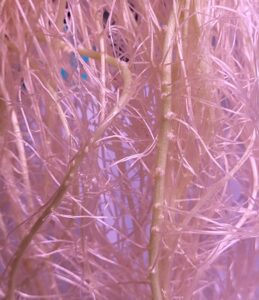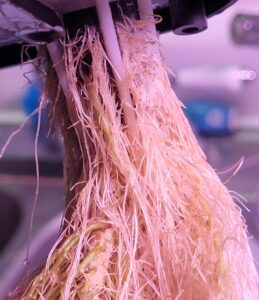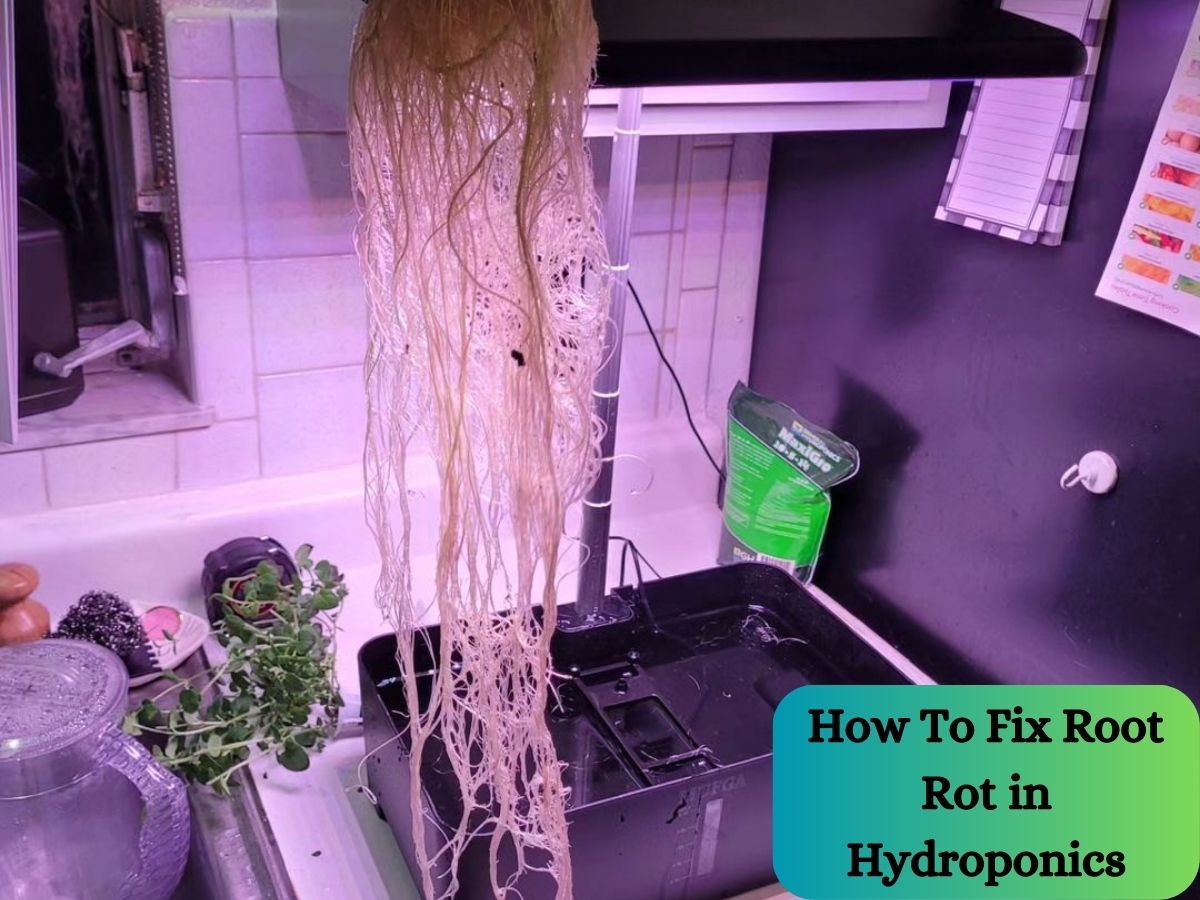If you’ve been experiencing the dreaded root rot in your hydroponic system, fret not, because we’ve got you covered. Today, we’re diving deep into the world of hydroponics to uncover the secrets of fixing root rot and getting your plants back on the path to vibrant, healthy growth.
Root rot is a common issue that can plague even the most seasoned hydroponic gardeners. It’s caused by the excessive growth of harmful fungi in the root zone, suffocating your plants’ precious roots and impeding nutrient uptake. But fear not, because, with the right knowledge and a proactive approach, you can bid farewell to this pesky problem once and for all.
Preventing and fixing root rot is crucial for hydroponic growers who want to maintain the health and productivity of their crops. By implementing effective measures to prevent and treat root rot, growers can ensure that their plants remain healthy and vibrant, leading to higher yields and profits.
In this blog, we’ll walk you through the telltale signs of root rot, helping you identify it early on, and then we’ll explore a range of effective solutions to combat this fungal fiend. From essential preventive measures to targeted treatments, we’ve got the strategies you need to rescue your hydroponic plants and promote a thriving, disease-free growing environment.
Get ready to revitalize your hydroponic garden and unleash its full potential. Let’s banish root rot and embark on a journey toward healthier, happier plants together. So, roll up your sleeves, grab your gardening gear, and let’s dive into the fascinating world of fixing root rot in hydroponics.
Causes of Root Rot in Hydroponics
The notorious root rot – the nemesis of hydroponic growers everywhere. Understanding its causes is crucial to preventing and combatting this pesky problem. So, let’s dive right in and uncover the primary culprits behind root rot in hydroponics:
- Overwatering: Giving your plants too much love in the form of water can backfire. Overwatering leads to poor oxygen circulation in the root zone, creating a prime environment for rot-causing pathogens.
- Poor Drainage: Inadequate drainage within your hydroponic system can trap excess water around the roots, encouraging the growth of harmful fungi and bacteria.
- Contaminated Water: Using unsterilized water or reusing nutrient solutions can introduce harmful microorganisms into your hydroponic setup, putting your plants’ roots at risk.
- Lack of Oxygen: Just like us, plants need oxygen to thrive. When the root zone lacks sufficient oxygen (anaerobic conditions), it becomes a breeding ground for pathogens that trigger root rot.
- High Humidity: Excessive humidity levels in your growing environment can contribute to moisture buildup around the roots, providing an ideal environment for rot to take hold.
- Poor Root Health: Weak or damaged roots are more susceptible to infections, making it essential to maintain their health through proper care and nutrient balance.
- Infected Plant Material: Introducing infected plants or contaminated materials into your hydroponic system can quickly spread root rot to healthy plants.
By understanding these root rot villains, you can take proactive steps to safeguard your hydroponic garden and keep your plants flourishing. So, let’s roll up our sleeves and learn how to fix root rot and ensure a thriving, disease-free hydroponic oasis. Here other reason why your plant may be dying.

Signs of Root Rot in Hydroponics
Spotting root rot in hydroponics is crucial for early intervention and saving your plants from a soggy demise. Keep a keen eye out for these telltale signs of root rot:
- Yellowing Leaves: One of the initial signs is the yellowing or browning of the lower leaves. As root rot impairs the roots’ ability to take up nutrients, the leaves may exhibit nutrient deficiencies, leading to discoloration.
- Wilting or Drooping: Root rot interferes with the roots’ ability to absorb water and nutrients, causing the plant to wilt or droop, even if the growing medium appears adequately moist.
- Slimy, Brownish Roots: Healthy roots should be white and firm, but in the case of root rot, they turn slimy, brown, or black. This decayed appearance indicates the presence of harmful pathogens.
- Foul Odor: A noticeable foul smell emanating from your hydroponic system is a clear sign of trouble. It indicates the presence of anaerobic bacteria thriving in the oxygen-deprived environment.
- Slowed Growth: If you notice your plants aren’t growing as they should or seem stunted in comparison to their normal rate of growth, root rot might be the culprit hindering their progress.
- Algae Growth: Excessive algae growth in your hydroponic system could indicate nutrient imbalances, which are often associated with root rot.
- Roots Pulling Away: In advanced stages, the roots may start to pull away from the stem easily due to their weakened condition.
Remember, the sooner you detect these signs and take action, the better chance you have of rescuing your plants from the clutches of root rot. Regular monitoring and practicing good hygiene and maintenance in your hydroponic system will go a long way in keeping your roots healthy and your plants thriving. So, keep those peepers peeled and be vigilant in your hydroponic gardening endeavors.
How to Fix Root Rot in Hydroponics
While root rot can be a formidable foe, you have the power to combat it and restore your plants’ health. Here’s a step-by-step guide on how to fix root rot in hydroponics:
- Act Swiftly: As soon as you spot signs of root rot, take immediate action. Delaying the response can lead to irreversible damage. Remove affected plants from the hydroponic system to prevent further spread of the infection.
- Trim Infected Roots: Carefully trim away the slimy, brown, or black roots using sanitized scissors or pruning shears. Make clean cuts, removing the affected parts entirely to prevent reinfection.
- Sterilize Equipment: Thoroughly clean and disinfect all equipment, including growing containers, air stones, and tubing. This helps eliminate any remaining pathogens that might be lurking in your system.
- Adjust Nutrient Solution: Check and adjust the nutrient solution’s pH and strength to ensure it’s within the optimal range for your plants’ needs. A balanced nutrient mix supports the roots’ recovery.
- Improve Oxygenation: Enhance oxygen levels in the root zone to discourage anaerobic pathogens. Consider using air stones or increasing aeration in the hydroponic reservoir.
- Enhance Drainage: Ensure your hydroponic system has proper drainage to avoid waterlogged conditions. This will prevent excess water from suffocating the roots and promote healthy oxygen flow.
- Use Beneficial Microbes: Introduce beneficial microbes into the hydroponic system to outcompete harmful pathogens. These good bacteria can help create a healthier root environment.
- Quarantine New Plants: Before adding new plants to your hydroponic setup, quarantine them for a few days to ensure they are free from any potential infections.
- Monitor Regularly: Keep a close eye on your plants and regularly inspect the root system for any signs of resurgence in root rot. Early detection is key to preventing future outbreaks.
- Practice Preventive Measures: Maintain proper hygiene, nutrient balance, and temperature in your hydroponic system. Preventive care goes a long way in keeping root rot at bay.
By following these steps and staying proactive in your hydroponic gardening, you can effectively fix root rot and set your plants on the path to recovery. Remember, a little tender loving care combined with a solid understanding of your plants’ needs is the ultimate recipe for a flourishing, root-rot-free hydroponic garden.

Preventing Root Rot in Hydroponics
Prevention is the key to a thriving and disease-free hydroponic garden. By implementing these preventive measures, you can minimize the risk of root rot and keep your plants happy and healthy:
- Proper Watering Practices: Avoid overwatering your plants, as excess moisture can create oxygen-deprived conditions in the root zone. Instead, follow a consistent watering schedule and allow the growing medium to dry slightly between watering sessions.
- Ensure Good Drainage: Set up your hydroponic system with adequate drainage to prevent water from pooling around the roots. This will promote healthy oxygen flow and discourage the growth of root-rot-causing pathogens.
- Sterilize Equipment and Medium: Before starting a new hydroponic cycle or introducing new plants, sterilize all equipment and growing medium thoroughly. This helps eliminate any potential sources of contamination.
- Maintain Nutrient Balance: Regularly monitor and adjust the nutrient solution’s pH and strength to provide your plants with the right balance of essential elements. Proper nutrition strengthens the plant’s immune system against diseases.
- Use Hydrogen Peroxide: Occasionally add a diluted hydrogen peroxide solution to your hydroponic system. This can help oxygenate the root zone and suppress harmful microbes.
- Choose Resilient Plant Varieties: Some plant varieties are more resistant to root rot than others. Research and select cultivars known for their disease resistance to give your garden an added advantage.
- Monitor Temperature and Humidity: Keep an eye on the temperature and humidity levels in your growing environment. High humidity can contribute to moisture buildup around the roots, so proper ventilation is crucial.
- Practice Crop Rotation: If possible, rotate crops within your hydroponic system. This prevents the buildup of pathogens specific to certain plant types.
- Use Beneficial Microbes: Introduce beneficial bacteria and fungi into your hydroponic system to create a bioactive, disease-suppressive environment around the roots.
- Inspect and Quarantine New Plants: Before adding new plants, thoroughly inspect them for any signs of disease. Quarantine new additions for a few days to ensure they are healthy and free from any potential infections.
By diligently implementing these preventive measures, you can significantly reduce the risk of root rot in your hydroponic garden. Remember, a little proactive care goes a long way in ensuring your plants’ roots stay healthy, happy, and ready to thrive.
Tips for preventing future root rot
Preventing future root rot is essential to maintaining a healthy and flourishing hydroponic garden. Here are some additional tips to bolster your preventive measures:
- Use Clean Growing Medium: When starting a new hydroponic system or transplanting plants, use the fresh, sterile growing medium to prevent introducing potential pathogens.
- Practice Proper Hygiene: Wash your hands thoroughly before handling plants, and regularly clean and sanitize all gardening tools and equipment to avoid cross-contamination.
- Implement Systematic Flushing: Periodically flush your hydroponic system with clean water to remove any accumulated salts and potential pathogens.
- Maintain Proper pH Levels: Check and adjust the pH of your nutrient solution regularly. Fluctuating pH levels can stress plants and weaken their defenses against diseases.
- Inspect Root Health: Routinely inspect the roots of your plants. Healthy white roots are a sign of thriving plants, while slimy or discolored roots may indicate a potential problem.
- Avoid Overcrowding: Give your plants enough space to grow and spread out their root systems. Overcrowding can lead to increased competition for nutrients and higher chances of root rot.
- Temperature Control: Maintain an optimal temperature range for your plants. Different plant species have specific temperature preferences, so ensure your hydroponic setup aligns with their needs.
- Use a Proper Watering System: Consider using automated watering systems that deliver water directly to the root zone, ensuring precise and efficient watering without the risk of overwatering.
- Monitor and Record: Keep a garden journal to record observations, including nutrient solution changes, pH levels, temperature, and any signs of stress or disease. Regular monitoring helps you catch any issues early on.
- Educate Yourself: Continuously learn about hydroponic gardening, including best practices, disease management, and new techniques. Knowledge is a powerful tool in maintaining a healthy garden.
By integrating these tips into your hydroponic gardening routine, you’ll create an environment that discourages root rot and sets the stage for your plants’ optimal growth and productivity. Remember, prevention is always better than cure, and your proactive efforts will pay off with a thriving, disease-free hydroponic oasis.

How to Fix Root Rot in Hydroponics FAQs?
Can you save a plant with root rot?
Yes, it is possible to save a plant with root rot if the condition is detected early and appropriate action is taken promptly. When root rot is caught in its initial stages, you can trim away the affected roots, sterilize the system, and adjust the growing conditions to create a more favorable environment for the plant’s recovery. With proper care and attention, the plant’s remaining healthy roots can regrow, allowing it to bounce back and resume healthy growth.
Can I reuse the hydroponic system after treating root rot?
Yes, you can reuse the hydroponic system after treating root rot, but it’s crucial to ensure that the system is thoroughly cleaned and sterilized before reintroducing new plants.
After removing the affected plants and trimming away diseased roots, clean all components of the hydroponic system, including containers, tubing, and air stones, using a disinfectant solution.
This step helps eliminate any lingering pathogens that could cause a reoccurrence of root rot. Additionally, consider changing the growing medium to reduce the risk of reinfection.
How long does it take to fix root rot?
The time it takes to fix root rot can vary depending on the severity of the infection, the plant species involved, and how quickly you take action. If root rot is detected early and appropriate measures are implemented, such as trimming the affected roots, improving drainage, and sterilizing the system, the plant can start recovering within a few days to a week.
However, for more advanced cases of root rot, it may take several weeks for the plant to fully recover, and in some instances, it may be too late to save the plant.
Can you reuse the contaminated water/nutrient solution?
It is not recommended to reuse the contaminated water or nutrient solution once it has been exposed to root rot. The presence of root rot indicates the presence of harmful pathogens and microorganisms that can quickly multiply and spread throughout the nutrient solution.
Reusing contaminated water can lead to the reinfection of healthy plants and exacerbate the root rot problem. It’s best to discard the contaminated solution safely and prepare a fresh, sterile batch of nutrient solution for your hydroponic system.
How often should I check my hydroponic system for root rot?
Regular monitoring is essential to catch root rot early and prevent its escalation. The frequency of checks depends on various factors, including the plant species, environmental conditions, and the history of root rot occurrences in your hydroponic system.
As a general guideline, check your hydroponic system at least once a week, paying close attention to the health of the roots, the appearance of the plants, and any signs of wilting or discoloration in the leaves.
If you notice any abnormal or suspicious changes, investigate further and take appropriate action promptly.
How long does it take for roots to recover from root rot?
The recovery time for roots after root rot can vary depending on the extent of the damage and how well the issue is addressed. In mild cases where root rot is caught early, and the necessary corrective measures are taken, root recovery can begin within a few days to a week.
Healthy white roots should start growing and branching out from the remaining healthy portions. However, for more severe cases of root rot, it may take several weeks for the roots to fully recover and regain their vigor.
During the recovery period, it’s essential to continue providing optimal growing conditions, including a well-balanced nutrient solution, proper oxygenation, and appropriate temperature and humidity levels.
Additionally, keep a close eye on the plant’s overall health and make any necessary adjustments to support its recovery process. Patience and diligent care are key to helping the roots bounce back and reestablish a healthy root system.
Conclusion
Tackling root rot in hydroponics is vital for the success of your garden, and prevention is undoubtedly the best approach. By implementing proper watering practices, ensuring good drainage, sterilizing equipment, and maintaining a balanced nutrient solution, you can significantly reduce the risk of root rot.
Regular monitoring and early detection of any signs of trouble will allow you to take prompt action and save your plants from this soggy nemesis.
Remember, a proactive approach is key, and practicing good hygiene, using beneficial microbes, and providing the right growing conditions will go a long way in safeguarding your hydroponic garden. While root rot can pose a challenge, don’t be disheartened. With dedication and a little know-how, you can fix root rot and set your plants on the path to recovery.
So, let’s roll up our sleeves, stay vigilant, and nurture our hydroponic oasis to flourish. Armed with the knowledge to combat root rot and armed with preventive measures, you can now confidently embark on a hydroponic journey that yields bountiful, healthy, and vibrant harvests for seasons to come.
